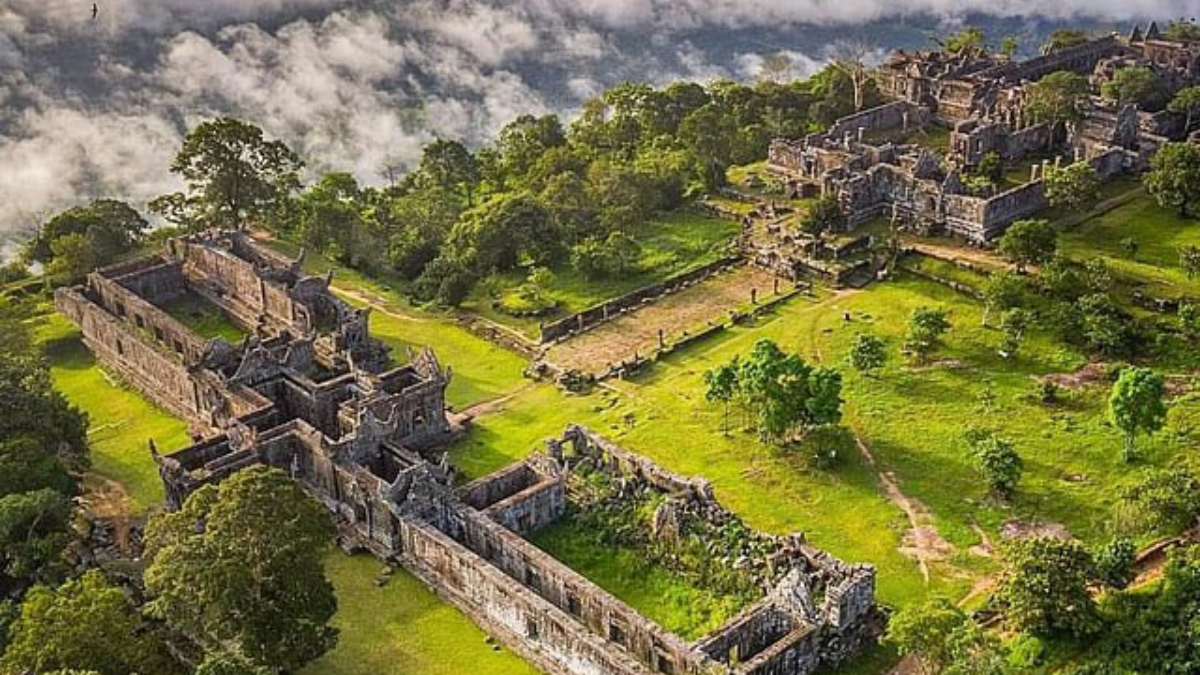Preah Vihear Temple row EXPLAINED: The Hindu Shiva temple at the heart of Thailand-Cambodia border dispute
 The Preah Vihear Temple, also known as Prasat Preah Vihear | X
The Preah Vihear Temple, also known as Prasat Preah Vihear | X
At least 12 lives have been lost, including a soldier and a child, after armed clashes erupted on Thursday between Thailand and Cambodia in long-disputed border areas, rapidly escalating months of tension. This marked the second armed confrontation since a Cambodian soldier was shot dead in May and represented a major escalation, occurring hours after the two countries downgraded diplomatic relations following a landmine explosion that injured Thai soldiers.
At the heart of the conflict between the two neighbours is an 11th-century Shiva temple -- the Prasat Preah Vihear. Both countries lay claim to the temple, which is the root cause of the standoff. Over the years, clashes stemming from this issue have resulted in civilian and military casualties on both sides.
Following the killing of a Cambodian soldier in May, Thai-Cambodian bilateral relations plummeted to their lowest point in over a decade.
In the past two months, the world has witnessed Cambodia banning imports from Thailand, according to the BBC. Both countries have also sent additional forces to the border. As the region fears the conflict escalating, here is what you need to know about the temple:
The Preah Vihear Temple and UNESCO
The Preah Vihear Temple, also known as Prasat Preah Vihear, was built during the Khmer Empire by King Udayadityavarman II. This Shiva temple is located atop a cliff on the Cambodia–Thailand border in the Dângrêk Mountains.
The borders of the two nations were drawn after the French occupation of Cambodia, which ended on 9 November 1953. However, the dispute between the two countries thus dates back more than a century.
During those times, Cambodia was French Indochina, and Thailand was Siam. While the demarcation by colonial masters placed the temple on the Cambodian side, Thailand began claiming sovereignty over the land around it over the years. When the matter reached the International Court of Justice (ICJ) in 1962, the ruling favoured Cambodia. Thailand was ordered to withdraw its forces from the temple's vicinity. This led to Bangkok changing its stance to dispute the exact demarcation of the 4.6 square kilometres surrounding the temple, rather than the monument itself.
Things took an ugly turn in 2008 when Cambodia attempted to register an 11th-century temple located in the disputed area as a UNESCO World Heritage Site – a move that was met with heated protest from Thailand.
In 2013, Cambodia secured another ICJ ruling in its favour, clarifying that the country had sovereignty over the entire promontory of Preah Vihear, including the contested area. However, by that time, their attempt to get UNESCO heritage site status had already been exploited by Thai nationalists and the right-wing as a political weapon against the then-incumbent government, according to reports. This resulted in recurring armed clashes from 2008 to 2013 (until the second ICJ order was issued) along the temple border area, particularly over the disputed 4.6 square kilometres.
Thailand-Cambodia conflict
"Fighting must first stop between Thailand and Cambodia before there can be negotiations," Thailand's acting premier said on Thursday. Caretaker Prime Minister Phumtham Wechayachai told a press conference that there had been no declaration of war and the conflict was not spreading into more provinces. He added that Cambodia had fired heavy weapons into Thailand without any specific targets, resulting in civilian deaths.
World